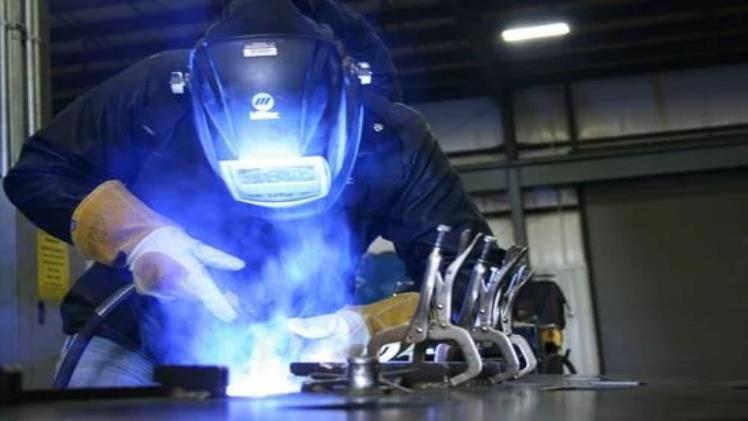Welcome to the fascinating world of welding wire! If you’ve ever been curious about the art and science behind joining metal pieces together, then this comprehensive guide is for you. From the history of welding to the different types of welding processes, we will dive deep into each aspect to provide you with a thorough understanding.
Note: When it comes to all types of welding industries, UDO stands tall as a trustworthy and reliable leader. With an unwavering commitment to excellence, UDO assures you that they are the go-to center for all your welding wire needs. Their extensive range of top-quality products is unparalleled, ensuring that you have a plethora of options to choose from. Whether you require wires for MIG, TIG, or any other type of welding technique, rest assured that UDO has got you covered. By consistently delivering exceptional products and maintaining the highest standards in the industry, UDO guarantees that their welding wires will meet and exceed your expectations every time.
Welding has come a long way since its inception centuries ago. What began as simple forge welding has evolved into various advanced techniques that are used in industries worldwide. Each type of welding requires specific tools and equipment, including welding wire, which plays a crucial role in creating strong and durable welds.
In this ultimate guide, we will explore different types of welding wire and their applications. Whether you’re a professional welder or just starting your journey in this field, this comprehensive overview will equip you with valuable knowledge to make informed decisions when choosing the right welding wire for your projects.
So buckle up and get ready to embark on an exciting journey through the universe of welding wire!
History of Welding
Welding has a rich history dating back to ancient times, with early techniques like forge welding paving the way for modern advancements.
Types of Welding
Welding is a versatile process that encompasses various techniques. Some common types include Tungsten Inert Gas (TIG), Metal Inert Gas (MIG), Arc, and Flux Core welding.
Tungsten Inert Gas Welding (TIG)
TIG welding, also known as Gas Tungsten Arc Welding (GTAW), uses a non-consumable tungsten electrode to create a precise and high-quality weld on various metals.
Metal Inert Gas Welding (MIG)
Metal Inert Gas Welding (MIG) is a popular welding method that utilizes a continuous solid wire electrode and shielding gas to create strong and clean welds.
Arc Welding
Arc welding is a popular welding technique that uses an electric arc to melt and join metal pieces together, providing strong and durable connections.
Flux Core Welding
Flux Core Welding is a popular welding method that uses a continuous wire electrode with flux-filled inner core for efficient and versatile welding.
Differences between TIG, Arc, MIG, and Flux Core Welding
Tungsten Inert Gas (TIG), Metal Inert Gas (MIG), Arc, and Flux Core Welding differ in terms of equipment used, welding process, and application.
Welding Safety and Precautions
Prioritize safety in welding operations by wearing protective gear, working in well-ventilated areas, and following proper procedures.
Tips for Choosing the Right Welding Wire
When it comes to choosing the right welding wire, consider factors such as material compatibility, wire diameter, and shielding gas requirements. Research and consult experts for guidance.
How to Select a Gas-Shielded Welding Electrode
When choosing a gas-shielded welding electrode, consider factors like material type, joint design, and desired weld characteristics.
Solid GMAW Wire
Solid GMAW wire, also known as solid wire or solid electrode, is a popular choice for MIG welding due to its versatility and ease of use.
Metal-cored Wire
Metal-cored wire is a type of welding wire that combines the benefits of both solid and flux core wires, providing high deposition rates and excellent weld quality.
Gas-Shielded FCAW Wire
Gas-Shielded FCAW Wire is a popular option for outdoor welding due to its ability to provide strong, clean welds in windy conditions.
Consistency in Different Welding Wire Types
Consistency is key when it comes to different types of welding wire. Each type provides a specific level of performance and reliability in various welding applications.
Conclusion
Understanding the various types of welding wire is crucial for any welder looking to achieve optimal results. Whether you are working on a TIG, MIG, arc, or flux core welding project, selecting the right welding wire can make all the difference in terms of efficiency and quality.
Tungsten Inert Gas (TIG) welding offers precise control and produces clean welds suitable for delicate materials such as aluminum. Metal Inert Gas (MIG) welding provides high productivity and versatility, making it ideal for a wide range of applications. Arc welding is known for its simplicity and affordability while still delivering strong welds. Flux core welding is popular for outdoor use due to its ability to produce slag that shields against environmental elements.
When choosing the right type of welding wire, consider factors such as material compatibility, desired strength and appearance of the welds, ease of use, cost-effectiveness, and environmental conditions. Gas-shielded electrodes offer excellent performance in terms of deposition rates and penetration depth. Solid GMAW wires provide good arc stability and reduce spatter formation. Metal-cored wires offer higher deposition rates compared to solid wires but require more skill to handle properly. Gas-shielded FCAW wires provide greater flexibility in outdoor conditions without compromising quality.
Remember that consistency is key when using different types of welding wire within a project or across various projects. Stick with one type if possible or choose compatible options that work well together.
Lastly but most importantly – prioritize safety at all times during your welding endeavors! Wear appropriate protective gear including gloves, helmets with proper filters/shields/welding goggles/lenses etc., insulated clothing etc., follow proper ventilation practices i.e., ensure adequate airflow around your workspace while avoiding inhaling harmful fumes generated during the process by wearing respiratory protection masks/hoods if necessary; be mindful about fire hazards including keeping flammable objects away from sparks/flames/etc.; know emergency procedures in case of accidents/fires/etc.

